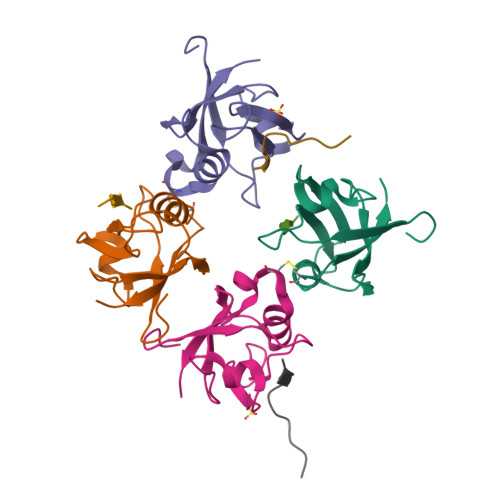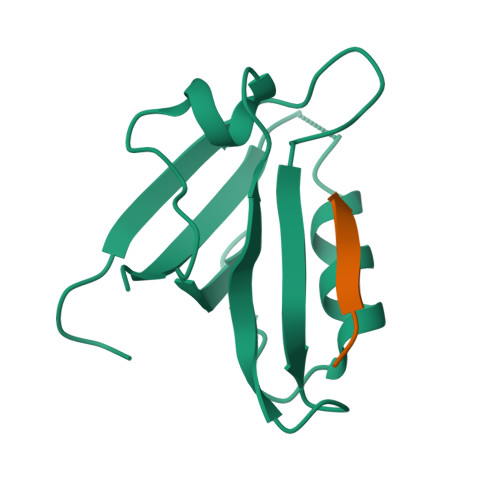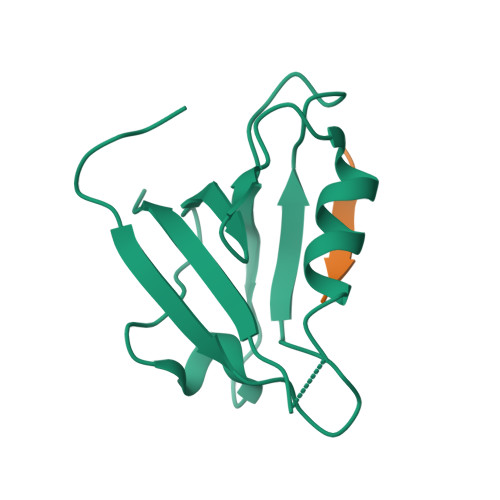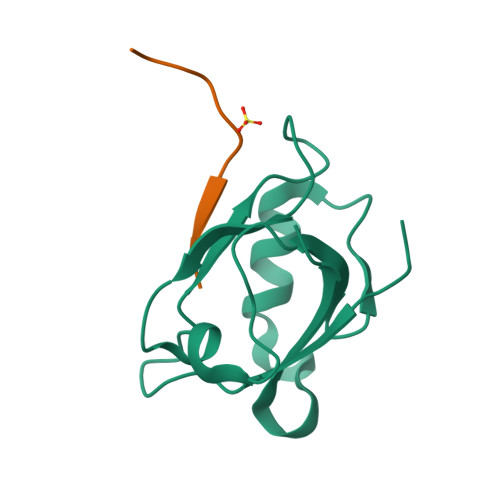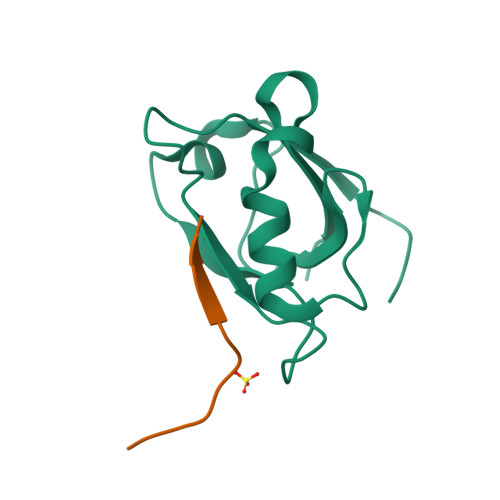Molecular Basis of the Interaction of the Human Protein Tyrosine Phosphatase Non-receptor Type 4 (PTPN4) with the Mitogen-activated Protein Kinase p38 gamma.
Maisonneuve, P., Caillet-Saguy, C., Vaney, M.C., Bibi-Zainab, E., Sawyer, K., Raynal, B., Haouz, A., Delepierre, M., Lafon, M., Cordier, F., Wolff, N.(2016) J Biological Chem 291: 16699-16708
- PubMed: 27246854
- DOI: https://doi.org/10.1074/jbc.M115.707208
- Primary Citation of Related Structures:
5EYZ, 5EZ0 - PubMed Abstract:
The human protein tyrosine phosphatase non-receptor type 4 (PTPN4) prevents cell death induction in neuroblastoma and glioblastoma cell lines in a PDZ·PDZ binding motifs-dependent manner, but the cellular partners of PTPN4 involved in cell protection are unknown. Here, we described the mitogen-activated protein kinase p38γ as a cellular partner of PTPN4. The main contribution to the p38γ·PTPN4 complex formation is the tight interaction between the C terminus of p38γ and the PDZ domain of PTPN4. We solved the crystal structure of the PDZ domain of PTPN4 bound to the p38γ C terminus. We identified the molecular basis of recognition of the C-terminal sequence of p38γ that displays the highest affinity among all endogenous partners of PTPN4. We showed that the p38γ C terminus is also an efficient inducer of cell death after its intracellular delivery. In addition to recruiting the kinase, the binding of the C-terminal sequence of p38γ to PTPN4 abolishes the catalytic autoinhibition of PTPN4 and thus activates the phosphatase, which can efficiently dephosphorylate the activation loop of p38γ. We presume that the p38γ·PTPN4 interaction promotes cellular signaling, preventing cell death induction.
Organizational Affiliation:
From the Département de Biologie Structurale et Chimie, Unité de Résonance Magnétique Nucléaire des Biomolécules, UMR 3528 and Université Pierre et Marie Curie, Cellule Pasteur UPMC, 75005 Paris, France.








